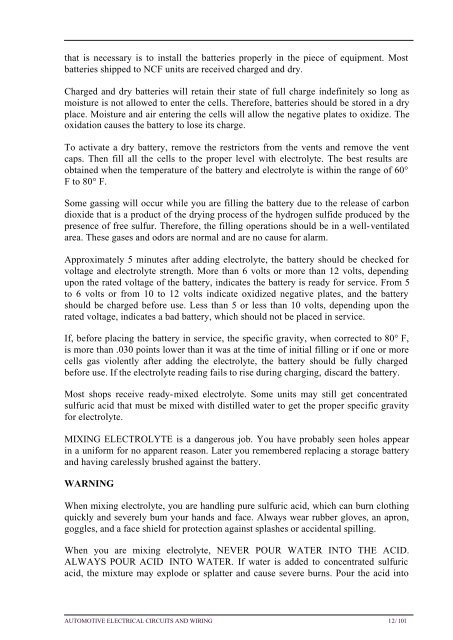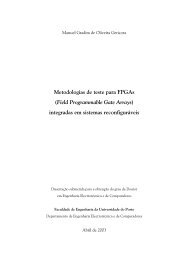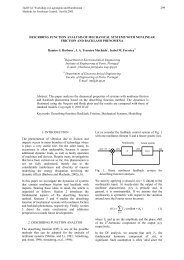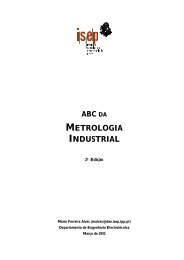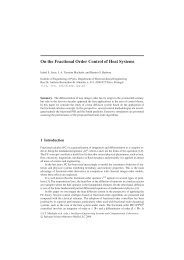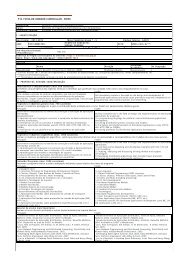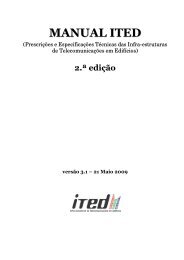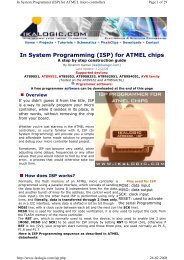AUTOMOTIVE ELECTRICAL CIRCUITS AND WIRING
AUTOMOTIVE ELECTRICAL CIRCUITS AND WIRING
AUTOMOTIVE ELECTRICAL CIRCUITS AND WIRING
You also want an ePaper? Increase the reach of your titles
YUMPU automatically turns print PDFs into web optimized ePapers that Google loves.
that is necessary is to install the batteries properly in the piece of equipment. Most<br />
batteries shipped to NCF units are received charged and dry.<br />
Charged and dry batteries will retain their state of full charge indefinitely so long as<br />
moisture is not allowed to enter the cells. Therefore, batteries should be stored in a dry<br />
place. Moisture and air entering the cells will allow the negative plates to oxidize. The<br />
oxidation causes the battery to lose its charge.<br />
To activate a dry battery, remove the restrictors from the vents and remove the vent<br />
caps. Then fill all the cells to the proper level with electrolyte. The best results are<br />
obtained when the temperature of the battery and electrolyte is within the range of 60°<br />
F to 80° F.<br />
Some gassing will occur while you are filling the battery due to the release of carbon<br />
dioxide that is a product of the drying process of the hydrogen sulfide produced by the<br />
presence of free sulfur. Therefore, the filling operations should be in a well-ventilated<br />
area. These gases and odors are normal and are no cause for alarm.<br />
Approximately 5 minutes after adding electrolyte, the battery should be checked for<br />
voltage and electrolyte strength. More than 6 volts or more than 12 volts, depending<br />
upon the rated voltage of the battery, indicates the battery is ready for service. From 5<br />
to 6 volts or from 10 to 12 volts indicate oxidized negative plates, and the battery<br />
should be charged before use. Less than 5 or less than 10 volts, depending upon the<br />
rated voltage, indicates a bad battery, which should not be placed in service.<br />
If, before placing the battery in service, the specific gravity, when corrected to 80° F,<br />
is more than .030 points lower than it was at the time of initial filling or if one or more<br />
cells gas violently after adding the electrolyte, the battery should be fully charged<br />
before use. If the electrolyte reading fails to rise during charging, discard the battery.<br />
Most shops receive ready-mixed electrolyte. Some units may still get concentrated<br />
sulfuric acid that must be mixed with distilled water to get the proper specific gravity<br />
for electrolyte.<br />
MIXING ELECTROLYTE is a dangerous job. You have probably seen holes appear<br />
in a uniform for no apparent reason. Later you remembered replacing a storage battery<br />
and having carelessly brushed against the battery.<br />
WARNING<br />
When mixing electrolyte, you are handling pure sulfuric acid, which can burn clothing<br />
quickly and severely bum your hands and face. Always wear rubber gloves, an apron,<br />
goggles, and a face shield for protection against splashes or accidental spilling.<br />
When you are mixing electrolyte, NEVER POUR WATER INTO THE ACID.<br />
ALWAYS POUR ACID INTO WATER. If water is added to concentrated sulfuric<br />
acid, the mixture may explode or splatter and cause severe burns. Pour the acid into<br />
<strong>AUTOMOTIVE</strong> <strong>ELECTRICAL</strong> <strong>CIRCUITS</strong> <strong>AND</strong> <strong>WIRING</strong> 12/ 101


